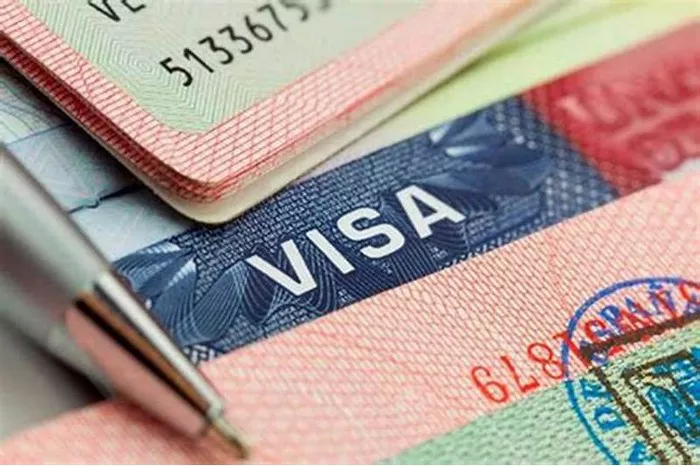In the intricate web of global travel, transit visas serve as crucial passports for passengers making connecting flights or layovers in a country en route to their final destination. These visas grant temporary entry rights, allowing travelers to pass through a country’s borders while on their way to another destination. Understanding what transit visas entail, their types, requirements, application processes, fees, and processing times is essential for smooth and hassle-free international travel.
What is a Transit Visa?
A transit visa is a temporary permit issued by a country’s immigration authorities that allows travelers to pass through its borders for a short period while en route to their final destination. It is distinct from tourist or business visas, as its sole purpose is to facilitate travel between two different countries. Transit visas are typically required when a passenger’s itinerary includes a layover or connecting flight in a country where they are not citizens or do not hold a visa exempt status.
Types of Transit Visas
Transit visas come in various types, each tailored to accommodate different travel scenarios:
1. Airport Transit Visa (ATV): This visa allows travelers to pass through the international zone of an airport while waiting for their connecting flight without entering the country’s territory. It is suitable for short layovers where passengers remain within the airport premises.
2. Short Stay Transit Visa: Also known as a Visitor in Transit visa, this type permits travelers to enter a country’s territory for a limited duration, typically up to 24 to 72 hours, during their layover. It enables passengers to leave the airport for sightseeing, resting, or other purposes before continuing their journey.
3. Direct Airside Transit Visa (DATV): Required by some countries for passengers who need to change planes in the same airport without passing through border control. It allows travelers to remain in the international transit area of the airport until their connecting flight without entering the country’s territory.
Transit Visa Requirements
The specific requirements for obtaining a transit visa vary depending on the country issuing the visa and the type of transit visa sought. However, common requirements may include:
1. Valid Passport: Applicants must possess a passport with a validity extending beyond the duration of their transit period.
2. Confirmed Travel Itinerary: Proof of onward travel, such as flight tickets or travel reservations, demonstrating the intention to leave the country within the authorized transit period.
3. Visa for Final Destination: If required, travelers must hold a visa for their ultimate destination, unless exempted by bilateral agreements or visa waiver programs.
4. Purpose of Transit: Clear documentation stating the purpose of transit and evidence supporting the need for a transit visa, such as connecting flight details.
5. Sufficient Funds: Proof of financial means to cover expenses during the transit period, including accommodation, meals, and transportation if applicable.
It is essential to review the specific requirements outlined by the embassy or consulate of the transit country well in advance of travel to ensure compliance and avoid any delays or complications.
How to Apply for a Transit Visa: A Step-by-Step Guide
Applying for a transit visa involves a series of steps, which may vary depending on the country issuing the visa. However, the following general guide outlines the typical process:
1. Research and Gather Documents: Begin by researching the transit visa requirements of the country you will be transiting through. Collect all necessary documents, including a valid passport, travel itinerary, visa for the final destination (if required), and any additional supporting documents.
2. Complete Application Form: Obtain the transit visa application form from the embassy or consulate website of the transit country. Fill out the form accurately and completely, following the provided instructions.
3. Schedule an Appointment: Some countries require applicants to schedule an appointment for visa submission at the embassy or consulate. Make an appointment well in advance to avoid delays, especially during peak travel seasons.
4. Submit Application and Pay Fees: Attend the visa appointment and submit your application along with the required documents. Pay the applicable visa fees, which vary depending on the type of transit visa and the processing time.
5. Biometric Data Submission: In some cases, applicants may be required to provide biometric data, such as fingerprints or photographs, as part of the visa application process.
6. Wait for Processing: After submitting the visa application, wait for processing. The processing time varies depending on the country and the type of transit visa requested. It is advisable to apply well in advance of your planned travel date to allow for sufficient processing time.
7. Collect Visa and Travel: Once the transit visa is approved, collect the visa from the embassy or consulate. Verify that all details on the visa are accurate and plan your travel accordingly.
Transit Visa Fees and Processing Time
Transit visa fees and processing times vary depending on the country issuing the visa and the type of transit visa applied for. Fees may range from a nominal amount to more substantial sums, reflecting the administrative costs associated with visa processing.
The processing time for transit visas also varies, with some countries offering expedited processing for an additional fee. It is advisable to check the embassy or consulate website of the transit country for the most up-to-date information on visa fees, processing times, and payment methods.
Conclusion
In conclusion, transit visas play a vital role in facilitating international travel for passengers with connecting flights or layovers in foreign countries. Understanding the types of transit visas available, their requirements, application processes, fees, and processing times is essential for seamless and stress-free travel experiences. By familiarizing oneself with the intricacies of transit visas and adhering to the prescribed guidelines, travelers can navigate through the complexities of international transit with confidence and ease.


